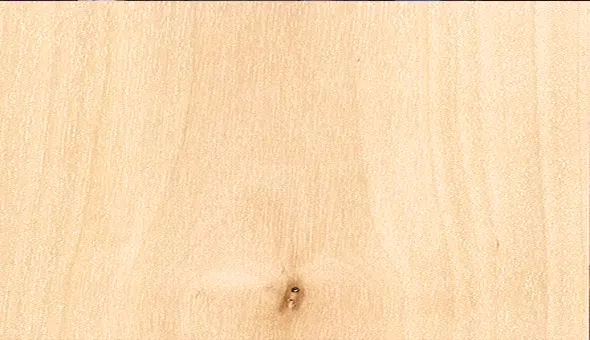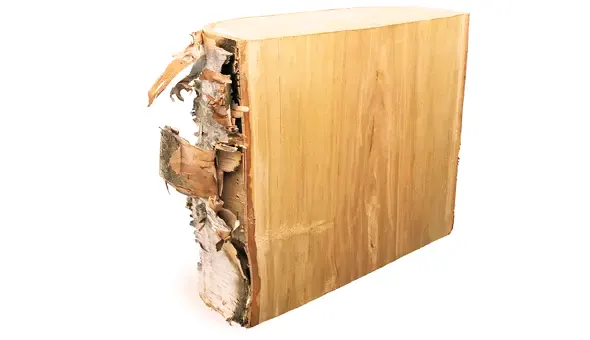Sweet Birch Lumber
- July 26, 2023
- 0 comment
Sweet Birch (Betula lenta) is a highly regarded hardwood species cherished for its remarkable visual appeal and adaptability in various woodworking projects. Its captivating reddish-brown hue and refined straight grain pattern impart an air of elegance to any finished product.

This wood’s versatility makes it a popular choice in a wide range of applications, including furniture making, cabinetry, flooring, and various interior designs. One of the standout features of Sweet Birch is its exceptional workability, responding admirably to both hand and machine tools, resulting in smooth and polished surfaces.
Furthermore, the wood emits a delightful sweet aroma, adding a pleasant sensory experience to the crafting process and final creation, making it even more appealing to woodworkers and consumers alike. Moreover, the distinct characteristics of Sweet Birch make it a preferred option for interior projects. Its reddish-brown color develops further in depth and warmth over time, enhancing its allure as it ages.
| Common Name(s) | Sweet Birch |
|---|---|
| Scientific Name | Betula lenta |
| Distribution | Eastern United States |
| Tree Size | 50-80 feet (15-24 meters) tall, 2-3 feet (0.6-0.9 meters) in diameter |
| Average Dried Weight | 40 lbs/ft3 (640 kg/m3) |
| Specific Gravity | 0.64 |
| Janka Hardness | 1,470 lbf (6,540 N) |
| Modulus of Rupture | 16,800 lbf/in2 (115.9 MPa) |
| Elastic Modulus | 1,830,000 lbf/in2 (12.62 GPa) |
| Crushing Strength | 8,440 lbf/in2 (58.2 MPa) |
| Shrinkage | Radial: 4.7%, Tangential: 8.4%, Volumetric: 13.8% |
Characteristics
Color/Appearance
Sweet Birch showcases a visually striking reddish-brown hue that exudes warmth and sophistication. Complementing this attractive heartwood is the creamy yellow sapwood, creating a pleasing contrast in color. As the wood ages and experiences exposure to light, its heartwood darkens, further enhancing its natural beauty and providing depth to the finished product.



Grain/Texture
The fine and even texture of Sweet Birch lumber contributes to its smooth and polished appearance, ideal for creating refined and elegant pieces. The wood’s straight grain pattern adds to its classic appeal, while occasional waves or curly figure variations infuse unique character and interest to the overall design. Woodworkers find the consistent grain and texture of Sweet Birch conducive to creating visually appealing and highly aesthetic projects.
Rot Resistance
Sweet Birch lacks natural resistance to decay, making it vulnerable to rot and fungal attacks if exposed to damp or outdoor conditions without proper protection. To ensure its longevity, Sweet Birch should be adequately treated or utilized for interior applications where it can thrive without exposure to the elements.
Workability
Renowned for its exceptional workability, Sweet Birch lends itself well to a range of woodworking techniques. Both hand and machine tools effortlessly shape and cut the wood, resulting in smooth surfaces and precise detailing. The lumber readily responds to sanding, allowing for a flawlessly finished piece. Moreover, Sweet Birch takes stains and finishes with ease, giving woodworkers ample opportunities for customization and enhancing its already captivating appearance.

Odor
Engaging the senses during woodworking, Sweet Birch emanates a delightful, sweet scent that adds to the gratifying experience of crafting with this wood. The pleasant aroma enhances the atmosphere in the workspace and lends a unique sensory element to the final product.
Allergies/Toxicity
Sweet Birch generally does not pose significant health concerns, as there are no widespread reports of allergic reactions. However, as with any woodworking material, some individuals may experience mild skin irritation, making it essential to exercise standard safety precautions and use protective equipment when handling the wood.
Pricing/Availability
Sweet Birch lumber enjoys moderate pricing and can be readily found in the Eastern United States, where the tree predominantly thrives. Its availability may vary, but it is generally accessible to woodworkers and enthusiasts looking to incorporate this beautiful hardwood into their projects.
Sustainability
The overall sustainability of Sweet Birch lumber hinges on responsible forest management practices and sourcing from well-managed forests. By supporting sustainable harvesting and replanting efforts, consumers can contribute to the continued availability and long-term viability of Sweet Birch as a valuable natural resource.

Common Uses
The versatility of Sweet Birch makes it a favored choice for a wide array of interior applications. Furniture makers appreciate its attractive appearance, while cabinetry craftsmen value its excellent workability. The wood’s durability and beauty make it suitable for flooring and paneling projects, adding charm and sophistication to interior spaces. Additionally, Sweet Birch finds use in turning objects, where its consistent grain and texture shine through in beautifully crafted items. Whether it’s in residential or commercial settings, Sweet Birch’s widespread adoption in interior applications underscores its popularity as a go-to hardwood for countless woodworking projects.
Frequently Asked Questions
- Is Sweet Birch suitable for outdoor projects?
No, Sweet Birch is not naturally resistant to decay, making it unsuitable for outdoor applications without proper protection. - Can Sweet Birch be stained or finished easily?
Yes, Sweet Birch takes stains and finishes well, allowing for customization of its appearance. - Is Sweet Birch a rare species?
While not as common as some other hardwoods, Sweet Birch is usually available in regions where it naturally grows. - What is the odor of Sweet Birch lumber like?
The wood has a sweet and pleasant aroma, which adds to its charm. - Is Sweet Birch an endangered species?
As of my last update in September 2021, Sweet Birch was not listed as an endangered species. However, it is essential to verify its current status from reliable sources.
We’d love to hear from you! Share your personal experiences and thoughts about Sweet Birch Lumber in the comments section below. Your insights could help fellow woodworkers make informed decisions!










Leave your comment